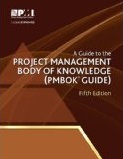When we talk about agile projects and the most popular agile approaches such as Scrum, XP, Lean or Kanban, there is never any mention of specific team member roles that correspond to waterfall projects. For example, where are the specialists, such as system architects, database designers, or business analysts? Are they no longer relevant in agile? Or are the tasks that would have been performed by people in these roles fulfilled in some other way?
Let’s focus on the role of the business analyst, a role that is vitally important in waterfall projects and as we shall see it is implicitly addressed in agile projects as well.
In general, the business analyst can help agile teams by representing the customer, especially when the business domain is complex and the team is not very familiar with it. He or she can elaborate the requirements and clarify their purpose in the business environment.
What the BABOK says about agile
For more information about the business analyst...









